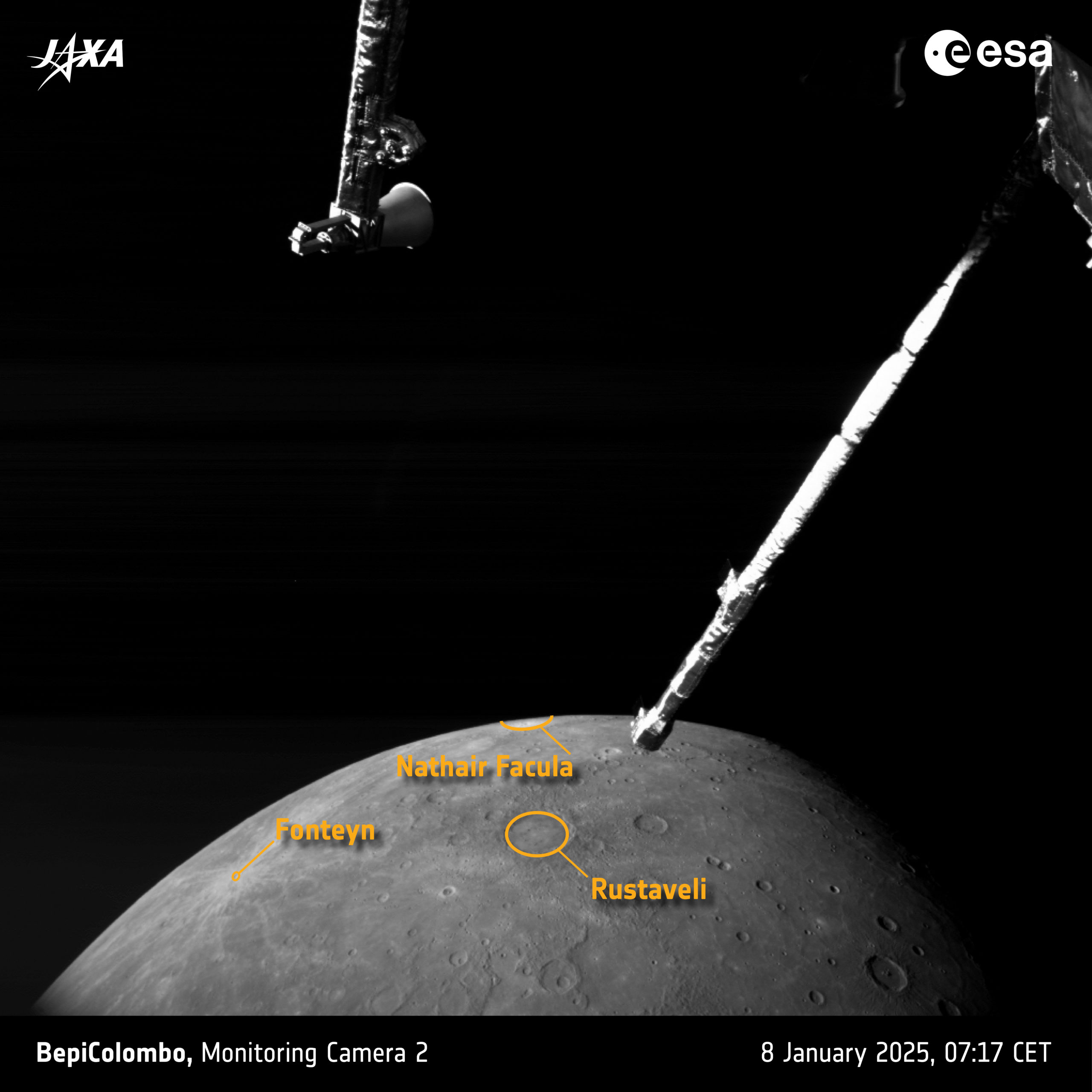MCAM-2 took this photo at 07:17 CET, when the spacecraft was about 2103 km from the planet’s surface. The spacecraft’s closest approach of 295 km took place on the planet’s night side at 06:59 CET.
The second image is annotated.
Text and credits: ESA
The bright patch near the planet’s upper edge in this image is the Nathair Facula, the aftermath of the largest volcanic explosion on Mercury. At its centre is a volcanic vent of around 40 km across that has been the site of at least three major eruptions. The explosive volcanic deposit is at least 300 km in diameter.
Nathair Facula is a major target for several BepiColombo instruments, which will measure the composition of the erupted material. This will teach us about what Mercury is made of, and how the planet formed.
Also visible is the relatively young Fonteyn crater, which formed a ‘mere’ 300 million years ago. Its youth is apparent from the brightness of the impact debris that radiates out from it. Older material on Mercury’s surface has become much darker from weathering as it aged.
Rustaveli, seen roughly in the centre of Mercury in this image, is about 200 km in diameter. Within its rim is a ring of peaks, making it a so-called peak ring basin. These peaks barely poke above smooth material on Rustaveli’s floor, which suggests the crater has been flooded by lava.
Interestingly, NASA’s Messenger spacecraft detected a magnetic signal coming from Rustaveli. When molten rock such as lava or impact melt solidifies, magnetic carriers within it align with the direction of the planet’s magnetic field. As the planetary magnetic field naturally changes over time, eventually the ‘locked in’ magnetic field in the planet’s crust no longer agrees with the planetary magnetic field, something that can be detected from space. BepiColombo’s two magnetometer instruments will investigate this further.
In the foreground of the image, the Mercury Planetary Orbiter’s medium gain antenna (top centre) and magnetometer boom (right) are visible.
Text and credits: ESA


